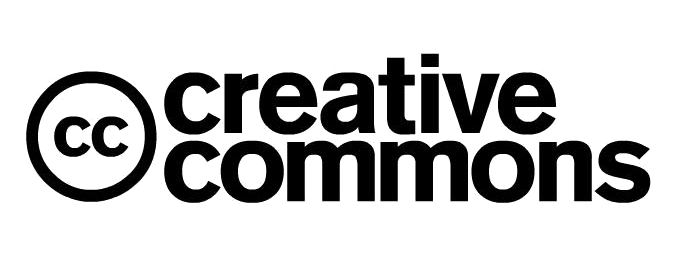The role of the central parts of the amygdala in regulating rat hemodynamics under stress
DOI:
https://doi.org/10.33910/2687-1270-2021-2-4-455-462Keywords:
amygdala, central nucleus of the amygdala, cardiovascular system, amygdalectomy, rats, stress responseAbstract
Stress has an adverse effect on health and is a risk factor for the development of many diseases. Modern neurobiological studies show that amygdala structures are hyperactivated under stressful conditions, making it clear that they play a role in the stress syndrome. However, the nature and mechanism of the connection between amygdala and stress are still unclear. We have studied the influence of the amygdala on the cardiovascular system of rats under chronic stress, which in the future may be useful for identifying the role of the amygdala complex in the implementation of stress reactions in rats. The work was carried out on mature female rats divided equally into the experimental and control groups. First, the animals underwent a central amygdalectomy under intraperitoneal nembutal anaesthesia. In the experimental group of rats, the structure under study was destroyed by the electrolytic method, the control group underwent a false “destruction” of the amygdala. Second, the animals were allowed a recovery period of seven days. Then, both groups were subjected to chronic mild stress for two weeks. After that, we measured the hemodynamic parameters of their cardiovascular systems and analysed their blood tests. The results obtained during our experiment show that the destruction of the central nucleus of the amygdala complex leads to changes in hemodynamic parameters of the cardiovascular system.
References
Belyakov, V. I., Inyushkina, E. M. (2008) Laboratornye krysy: soderzhanie, razvedenie, kormlenie i ispol’zovanie v biomeditsinskikh issledovaniyakh: uchebnoe posobie [Laboratory rats: Maintenance, breeding, feeding and use in biomedical research: training manual]. Samara: Samara State University Publ., 40 p. (In Russian)
Buresh, Ya., Bureshova, O., Houston, D. P. (1991) Metodiki i osnovnye eksperimenty po izucheniyu mozga i povedeniya [Methods and basic experiments on the study of the brain and behavior]. Moscow: Vysshaya shkola Publ., 399 p. (In Russian)
Carter, R. N. Pinnock, S. B., Herbert, J. (2004) Does the amygdala modulate adaptation to repeated stress? Neuroscience, vol. 126, no. 1, pp. 9–19. https://doi.org/10.1016/j.neuroscience.2004.01.018 (In English)
CODA Monitor. User’s Guide. (2021) [Online]. Available at: https://www.kentscientific.com/Customer-Content/www/products/Files/CODA_Monitor_Users_Guide_May_2021.pdf (accessed 02.10.2021). (In English)
Folkow, B., Hallback-Nordlander, M., Martner, J., Nordborg, C. (1982) Influence of amygdala lesions on cardiovascular responses to altering stimuli on behaviour and on blood pressure development in spontaneously hypertensive rats. Acta Physiologica Scandinavica, vol. 116, no. 2, pp. 133–139. https://doi.org/10.1111/j.1748-1716.1982. tb07121.x (In English)
Hölzel, B. K., Carmody, J., Evans, K. C. et al. (2010) Stress reduction correlates with structural changes in the amygdale. Social Cognitive and Affective Neuroscience, vol. 5, no. 1, pp. 11–17. https://doi.org/10.1093/scan/nsp034 (In English)
Kapp, B. S., Frysinger, R. C., Gallagher, M., Haselton, J. R. (1979) Amygdala central nucleus lesions: Effects on heart rate conditioning in the rabbit. Physiology and Behavior, vol. 23, no. 6, pp. 1109–1117. https://doi.org/10.1016/0031-9384(79)90304-4 (In English)
Liu, W-Z., Zhang, W-H., Zheng, Z-H. et al. (2020) Identification of a prefrontal cortex-to-amygdala pathway for chronic stress-induced anxiety. Nature Communications, vol. 11, no. 1, article 2221. https://doi.org/10.1038/s41467-020-15920-7 (In English)
Paxinos, G., Watson, C. (1998) The rat brain in stereotaxis coordinates. San Diego: Academic Press, 237 p. (In English)
Sanders, B. J., Wirtz-Nole, C., DeFord, S. M., Erling, B. F. (1994) Central amygdaloid lesions attenuate cardiovascular responses to acute stress in rats with borderline hypertension. Physiology and Behavior, vol. 56, no. 4, pp. 709–713. https://doi.org/10.1016/0031-9384(94)90231-3 (In English)
Selye H. (1960) Ocherki ob adaptatsionnom sindrome [The story of the adaptation syndrome]. Moscow: Medgiz Publ., 254 p. (In Russian)
Voronin, E. S., Kovalev, S. P., Snoz, G. V (2014) Praktikum po klinicheskoj diagnostike s rentgenologiej: uchebnoe posobie [Practicum on clinical diagnostics with radiology: Training manual]. Moscow: Infra-M Publ., 336 p. (In Russian)
Wei, J., Zhong, P., Qin, L. et al. (2018) Chemicogenetic restoration of the prefrontal cortex to amygdala pathway ameliorates stress-induced deficits. Cerebral Cortex, vol. 28, no. 6, pp. 1980–1990. https://doi.org/10.1093/cercor/bhx104 (In English)
Willner, P. (1997) Validity, reliability and utility of the chronic mild stress model of depression: A 10-year review and evaluation. Psychopharmacology, vol. 134, no. 4, pp. 319–329. https://doi.org/10.1007/s002130050456 (In English)
Downloads
Published
Issue
Section
License
Copyright (c) 2022 Ekaterina I. Bakulina, Anastasia D. Yudanova, Irina D. Romanova, Alexey N. Inyushkin

This work is licensed under a Creative Commons Attribution-NonCommercial 4.0 International License.
The work is provided under the terms of the Public Offer and of Creative Commons public license Creative Commons Attribution 4.0 International (CC BY 4.0).
This license permits an unlimited number of users to copy and redistribute the material in any medium or format, and to remix, transform, and build upon the material for any purpose, including commercial use.
This license retains copyright for the authors but allows others to freely distribute, use, and adapt the work, on the mandatory condition that appropriate credit is given. Users must provide a correct link to the original publication in our journal, cite the authors' names, and indicate if any changes were made.
Copyright remains with the authors. The CC BY 4.0 license does not transfer rights to third parties but rather grants users prior permission for use, provided the attribution condition is met. Any use of the work will be governed by the terms of this license.







